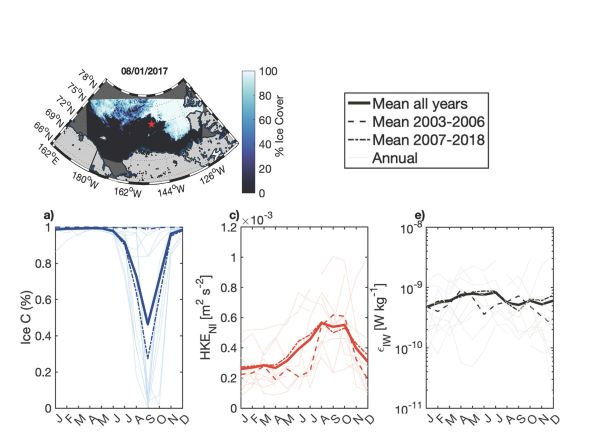Fine, E., Cole, S., 2022. Decadal observations of internal wave energy, shear, and mixing in the western Arctic Ocean. Journal of Geophysical Research Oceans, 127. https://doi.org/10.1029/2021jc018056

Seasonal cycle in ice concentration, near-inertial horizontal kinetic energy, and turbulent dissipation at BGOS mooring A (red star) from 2003-2018. Image provided by Effie Fine.
Changes in the Arctic climate have resulted in less summertime Arctic sea ice. These changes in ice-cover have the potential to influence internal waves, which carry energy deep into the ocean, providing the energy source for most ocean mixing. In this study, we use 15 years of observations to assess how changes in sea ice are related to changes in both the internal wavefield and the turbulent mixing caused by internal wave breaking. We find that while sea ice decline creates a more energetic internal wavefield, the mixing that internal waves causes doesn’t increase in ice-free conditions. We show that this apparent contradiction occurs because in ice-free conditions the internal wavefield tends to consist of waves with larger vertical scale that are less prone to breaking, so that even though the total energy increases, these more-energetic waves don’t increase total ocean mixing. This mechanism serves to protect sea ice from accelerating decline that could occur if sea ice loss resulted in more ocean mixing and thus higher oceanic heat fluxes.
